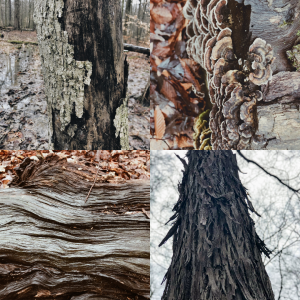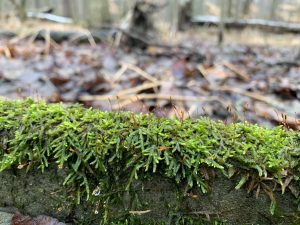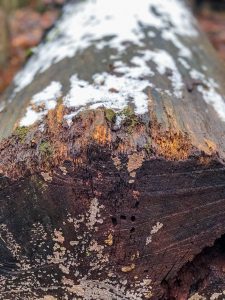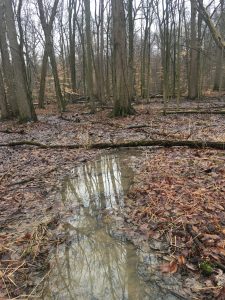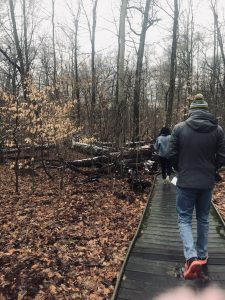
When approaching Johnson Woods on the bus, one quote that stuck out to me was one that Professor Bourne mentioned which was on the lines of “straight ahead you will see a forest on the left and on the other side of the road another forest: that is Johnson Woods.” This immediately made me think about the question we discussed earlier this semester about what is considered natural versus artificial in nature. As we drove closer to the forest, I instantly saw the forest in comparison to its surrounding area as natural and unharmed. The grandness of the red and white oaks, and hickories in a cluster with its tall trunks and its bare branches stuck out to me. It was as if it was the one unaltered thing that was present in this particular area. Just about everything else around the forest I saw as being artificial as it had been manipulated/altered in some way by humans for human benefits. An example of this can be seen with the road that cuts right through the forest. The installation of the asphalt road (Fox Lake Road) was placed between the forest to help connect Wadsworth Road (OH 57) and Mount Eaton Road North (OH 94) rather than having to find an alternative route to get to the two popular state routes. Another example is the surrounding area. It is primarily composed of open pastures and/or farmland, which is used for holding livestock and agricultural production for benefit. With my observation of the façade of the forest as seeming natural and untouched, I was shockingly surprised to be wrong by my notion.
What I thought had been a natural area now changed as I began to see the human disturbances that had been placed within the forest. The first artificial addition to the forest was the installation of the boardwalk, as I was immediately shocked to see a boardwalk lying on the ground in the entrance and then throughout the walk. I saw the boardwalk as a disturbance as it was disconnecting the hiker from making a physical connection with nature. Also, the path essentially posed a set narrative to what to look at rather than letting the hiker explore on their own. Another artificial addition was the installation of sugar maple and American beech trees in place of the larger oaks and hickories that are dying. Though it is good these trees are being replaced, the addition of the maples and beeches are consequently “becoming more prominent members of the forest community at Johnson Woods” (Preserving 206 acres in Wayne County). One word that stands out is “in place” as it implies the action of making an alteration to something that was original or natural. Initially the idea of adding maples and beeches to the forest sounded good, but I have come to think differently as it is ultimately changing the original biodiversity that Johnson Woods initially had. It makes me question: why don’t the people who help preserve the forest plant new oaks and hickories instead of bringing in a completely new tree species in? The last artificial addition I saw was the graffiti that was scratched into the beech trees. I have seen people scratch their initials into trees, especially beech trees, in the past in more public areas, but I was shocked to see many of the beech trees, in an OLD GROWTH FOREST, were vandalized. It goes to show the negative human impact that has become to be more present in this once natural forest.

